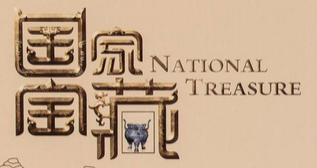

 |
![]()
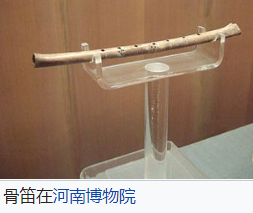
One of the Gudi flutes discovered at Jiahu, on display at the Henan Museum
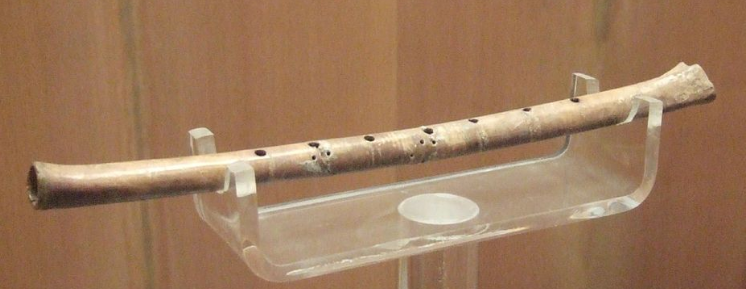
中文名称:贾湖骨笛
所属年代:新石器时代距今7800年~9000年
出土地点:河南省舞阳县贾湖遗址
出土时间:1987年
器物规格:长23.1cm
馆藏地点:河南博物院
These bone flutes were excavated in 1986 from an early neolithic tomb in Jiahu, Wuyan County, Henan Province, in Central China. They have been dated to 6000 BC.
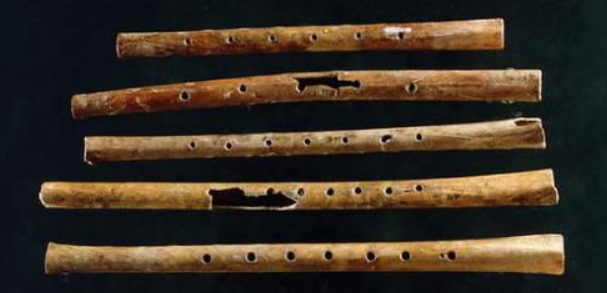
河南贾湖遗址出土了20多支骨笛。笛孔有5、6、7、8之别,大多数骨笛仍为7孔。贾湖骨笛是我国目前出土的年代最早的乐器实物。更被专家认定为世界上最早的可吹奏乐器。实验证明,贾湖骨笛不仅能够演奏传统的五声或七声调式的乐曲,而且能够演奏富含变化音的少数民族或外国乐曲。它的出土,改写了先秦音乐史乃至整部中国音乐史,具有无可比拟的重要地位和价值。其研究成果在英国《自然》、《古物》等著名学术期刊上发表后,引起国内外学界的广泛关注。目前,这一成果已被铭刻在北京“中华世纪坛”青铜甬道的显要位置。
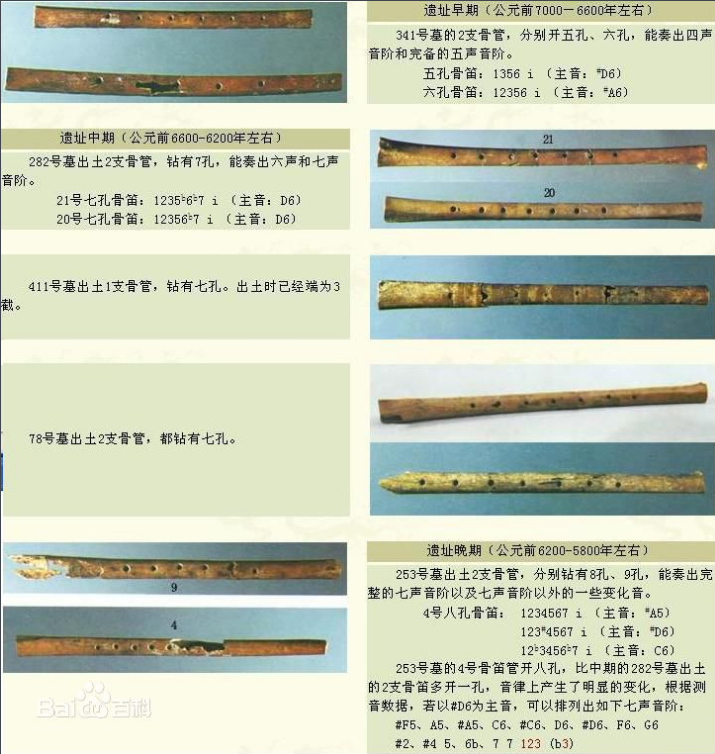
賈湖骨笛以水鳥的尺骨鋸去兩端關節鑽孔而成,長22.7釐米。笛身有小孔,估計制笛人運用打小孔的方法調整個別音孔的音差,反映出賈湖人有音階與音距的基本概念。
贾湖骨笛发现于1986年5月初,首次在编号为M78的墓葬中清理出二支完整骨笛。同年秋,又于4座墓葬中发现多支。1987年又发现数支。M282出土的1支七孔骨笛保存十分完整。张居中等带着这只完整的七孔笛赴北京鉴定。中国艺术研究院音乐研究所民族民间音乐研究室主任萧兴华首肯它是吹奏乐器骨笛,中央民族乐团笛子演奏家宁保生进行了吹试。11月,黄翔鹏、萧兴华、徐桃英、顾伯宝、童忠良等音乐专家,携带仪器到郑州对编号为M282:20的这支骨笛再次进行测试。试吹采用斜出45度角方法竖吹,测后的结论认为,这支骨笛的音阶阶构至少是清商音阶六声,也有可能是七声音阶具备的下徵调音阶,并给它定了一个自然、简单的名字“笛”。
根据骨笛出土的地层和形制,研究者把它分为三期:
早期:公元前9000多年~公元前8600年左右,笛上刻孔多五孔、六孔,能奏出四声音阶和完备的五声音阶。
中期:公元前8600~公元前8200年左右,笛上皆刻七孔,能奏出六声和七声音阶。
晚期:公元前8200~公元前7800年左右,多七孔,个别有八孔,能奏出完整的七声音阶及七音阶以外的变化音。
贾湖骨笛的出土将中国音乐文化上推至9000年。改写了中国历史原先对先秦音乐史只有五阶音域的史考,贾湖骨笛有七阶高低阶音域。其形制固定,制作十分规范,极具表现力,多数可达2个八度音域以上。是迄今为止世界上年代最早、保存最完整、出土个数最多,且能演奏的乐器实物。从而改写了中国乃至世界音乐史,在世界音乐史上具有重要地位。
贾湖骨笛,不仅远远早于美索不达米亚的乌尔古墓出土的笛子,也比古埃及第一王朝时期陶制器皿状笛子和在化妆版上刻画的类似后世阿拉伯竹笛的笛子形象早。比古埃及出现的笛子要早2000年,被称为世界笛子的鼻祖。这一批精致骨笛,被认定为世界上最早的吹奏乐器,把中国七声音阶的历史提前到八千年前。
